Want to add an African Milk cactus to your houseplant collection? They are beautiful and easy to care for! Here's my complete African Milk Tree care guide!
Are you looking to build your collection of houseplants? Or wish to buy your very first plant and elevate the atmosphere of your home - but you aren’t sure whether you can take care of it?
Well, today, we are looking into one of the most amazing plants you can have in your home, including a guide on taking care of it!
Whether you are an experienced plant lover or a complete beginner – the African milk tree is perfect for anyone.
If you are looking into buying an African milk tree, there are several things you should take into consideration. But don’t be alarmed because this plant is not challenging to take care of, and totally worth the effort!
The African Milk Tree is one of the most interesting succulents, because it has such a unique look that immediately catches your attention.
Without further ado, let’s see what you need to do about it once you bring it into your home.

What is the African Milk Tree?
The African milk tree is one of the most fabulous succulents you will ever find! It grows tall and has small leaves/branches, especially around the top. It also has thorns all over, which are about ¼ inch long.
Other names for African Milk Tree include:
- Cathedral cactus
- Good luck cactus
- Friendship cactus
- Candelabra cactus
- Euphorbia trigona
It is an incredibly popular plant, mostly because of its unique appearance and rich and dark green color.
Even though it looks like a cactus, it is succulent, making all the difference when it comes to care and maintenance. If you nurture it correctly, it can stay healthy throughout the year.

African Milk Tree origins
The African Milk Cactus is native to Central Africa, so naturally, it needs warm conditions if you want it to thrive.
Why is it called an African milk plant?
The answer is simple – it produces a sap that is a bit milky-looking, and if you decide to cut a stem, you can see that for yourself.
It is not just this plant that produces it – all of the plants from the Euphorbia family produce this white matter once you cut off a stem.
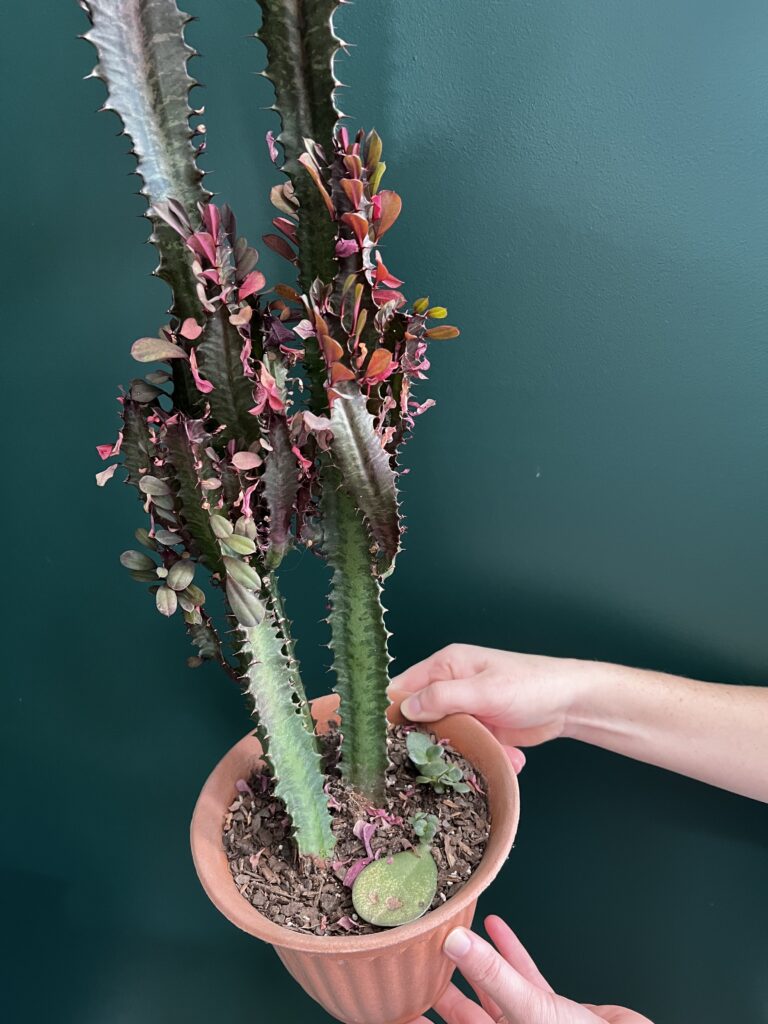
Is African Milk Tree rare?
African Milk cactus has a unique look, but it is pretty common to find them at garden stores. Just because they are common doesn't make them any less interesting!
Is African Milk Tree toxic?
The sap that drips from this cactus is definitely toxic. Keep it away from pets and kids!
Free printable African Milk Tree care guide
Join the (free!) KeepYourPlantsAlive+ community to access this exclusive printable plant care guide! Once you sign up, you can right click & save the JPG care guide. Or keep scrolling for more!
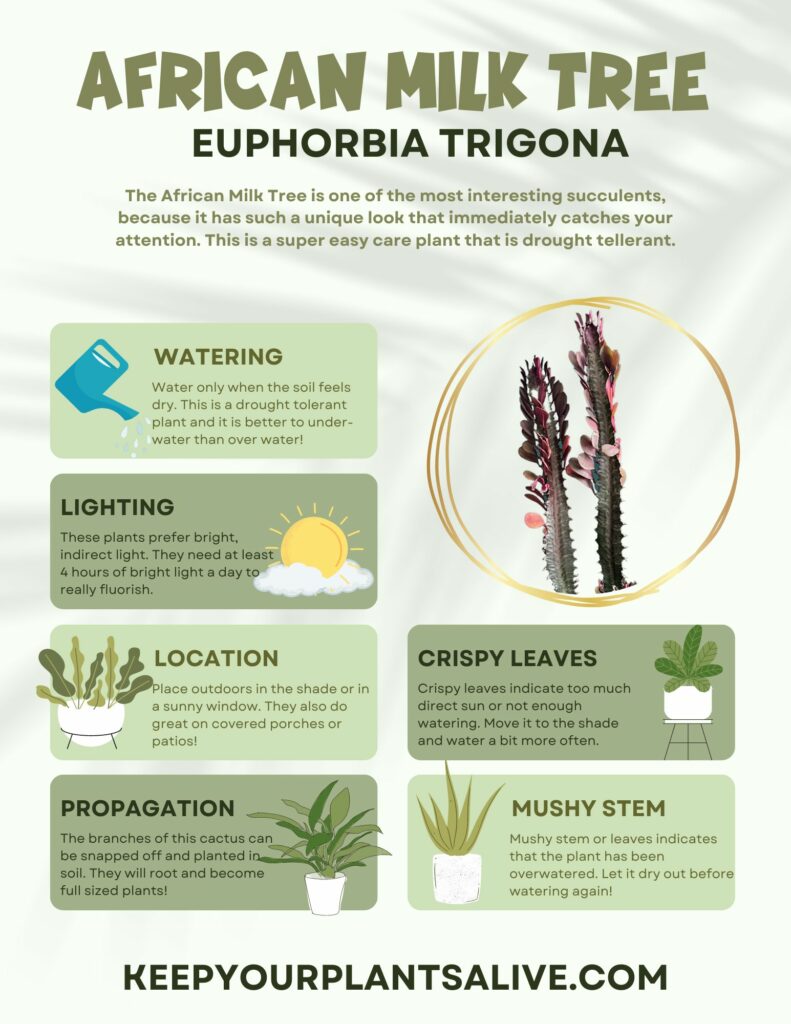
African Milk Tree care guide
Now, let’s talk about requirements! When you look into it, you will see that the African milk tree does not require that much, care-wise.
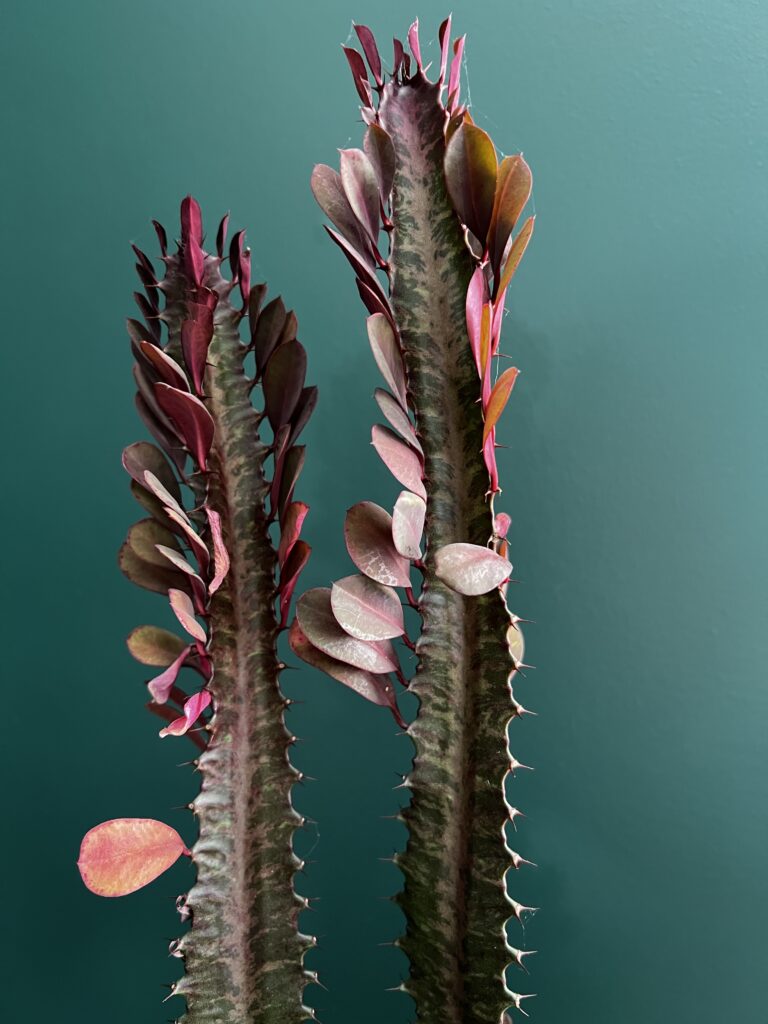
African Milk Tree watering
You do not want this succulent to get soggy. Water only when the soil feels dry - once every week or two. Be sure that your pot has plenty of drainage so water doesn't pool.
Read my guide on drilling drainage holes in pots!
How often should I water my African Milk Tree plant?
These plants are super drought tolerant. Water them no more than once a week. If they are in bright light or direct sun, the soil will dry out faster, while shady conditions will mean it can go 2-3 weeks between waterings.
Should I mist my African Milk Tree?
No! As with any succulent or cactus, you also need to control the humidity level. This is a succulent that enjoys warm weather, but it does not thrive in humid conditions.
Check your humidity levels in the home often to ensure that you are giving your African milk cactus the conditions it needs.
If you let it grow in an area that is too humid, it may develop a certain type of fungus and attract some pests. In some cases, there is no return from this state – so be careful.
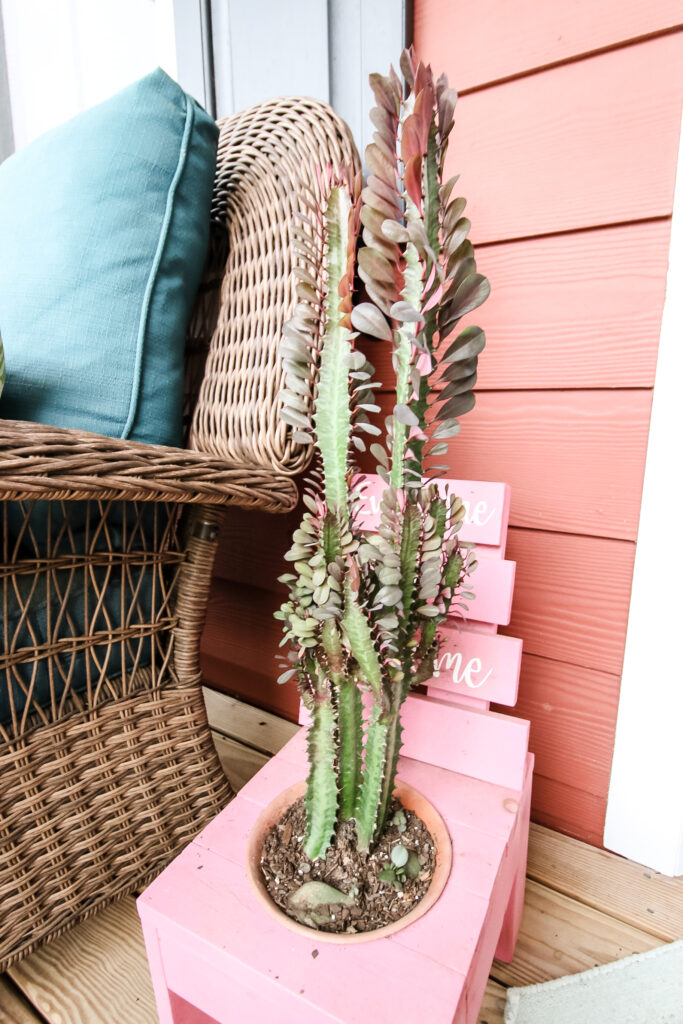
African Milk Tree lighting needs
This plant loves bright sunlight, but indirect light only, so if you have a window facing south, it would be the perfect location for it.
If you want to maintain the plant in its optimal condition, you will need to ensure it gets at least four hours of indirect sunlight daily.
You can also keep it in direct sunlight since it thrives in warmer conditions, but, in this case, you will need to water it a little more. Full sun will dry out your soil mix quicker!
Can I keep African Milk Tree outdoors?
For the better part of the year, if you are lucky enough to live somewhere warm, you can place the African milk tree outside. Keep it on your terrace, front or back yard, or garden.
If you decide to do this, keep the plant in a shaded area to prevent it from drying out. After all, being in the sun for too long rarely agrees with any plant, right?
Can African Milk Tree survive winter?
These plants will die if they get under 50 degrees for extended periods of time. Bring them indoors for winter if you live somewhere cold!
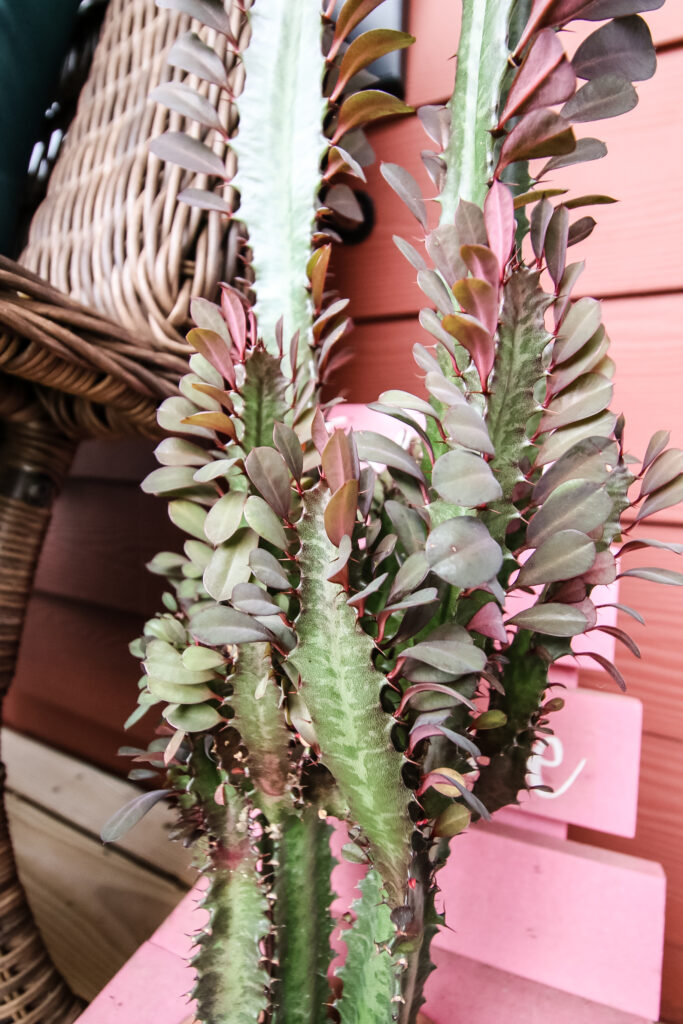
African Milk Tree soil + potting
Regarding African milk tree care, there are many things you should take into consideration. First, the most important bit is good drainage for the soil.
Since this is a succulent, it cannot thrive in completely wet conditions, so well drained soil is a must. If its roots are constantly moist, you might be dealing with a plant that is slowly rotting.
Since we all want to avoid that, ensure that the soil is loose enough. Also, when it comes to water, don’t overwhelm your plant with it. Be moderate and gentle, and add water to it about once a week or every two weeks.
Don’t be afraid to get your hands dirty! If you are still uncertain about the water requirements, check the potting soil. Stick your finger in it – if it is dry a few inches down, it is time to water your African milk plant.
Does African Milk Tree like to be root bound?
The African Milk Tree has a super small root system so it is unlikely to become root bound. It's important to keep it in a big enough pot to keep it from toppling over as it can grow several feet tall!
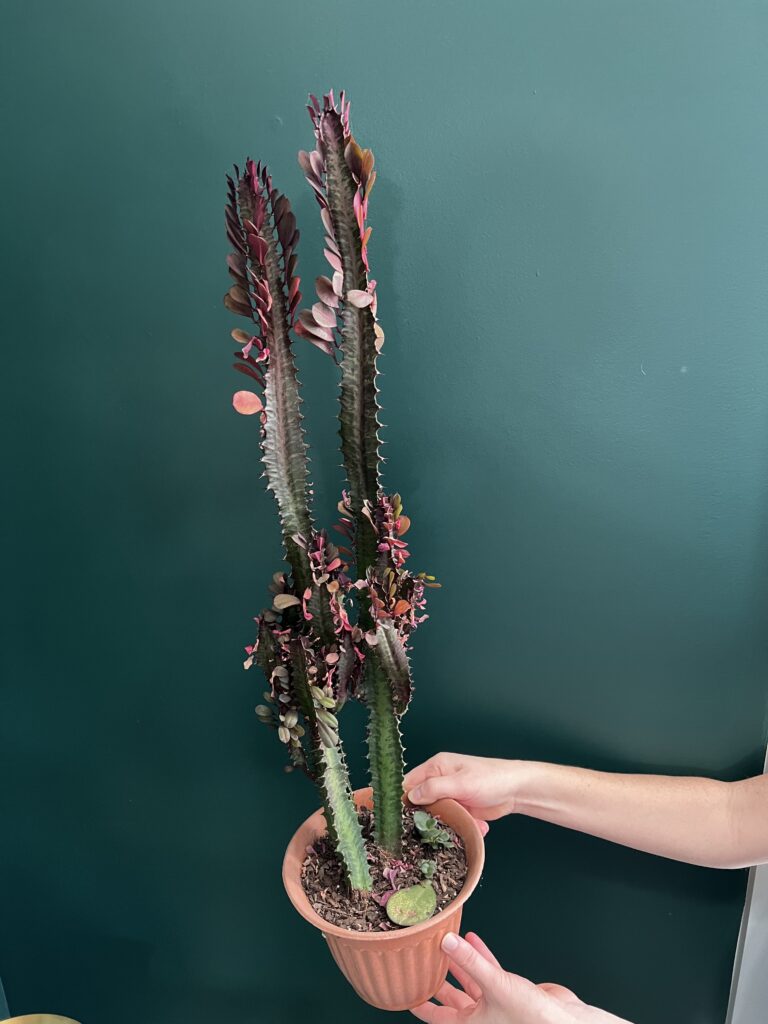
Repotting the African Milk Tree
This is easy – you should repot your African Milk Cactus every two to three years. As with all other plants, when replanting your African milk tree, you need to wear gloves and handle it with care.
Remember, it is called a milk tree because the white sap that drips from it is poisonous.
You can repot your plant any time of year, but it is generally best to do at the beginning of growing season - spring or early summer.
How to propagate African Milk Tree
Sharing your plant with loved ones brings good luck. So, you can always break a stem or two and give them to a close friend or a family member.
Plant the stem cuttings 1-4 inches deep in soil and they will root in place!
Thanks for reading!


Hey there, I'm Morgan, a houseplant enthusiast from sunny Charleston, South Carolina. Growing up surrounded by my mom's lush orchids and African violets, I discovered the magic of bringing nature indoors. Thanks to the pandemic, I delved deeper into houseplants, discovering their power to uplift moods and transform spaces. I'm here to spill all my secrets, helping you pick the perfect houseplant - and make it happy. Let's keep your plants alive, together! 😊
